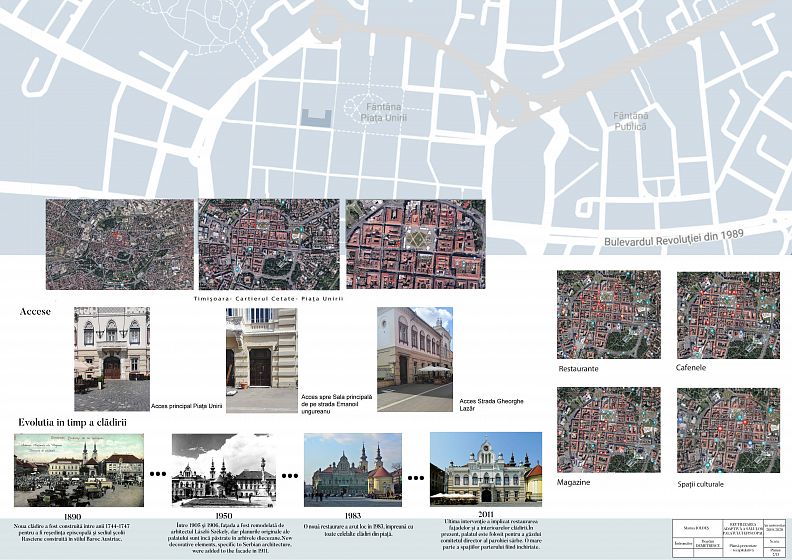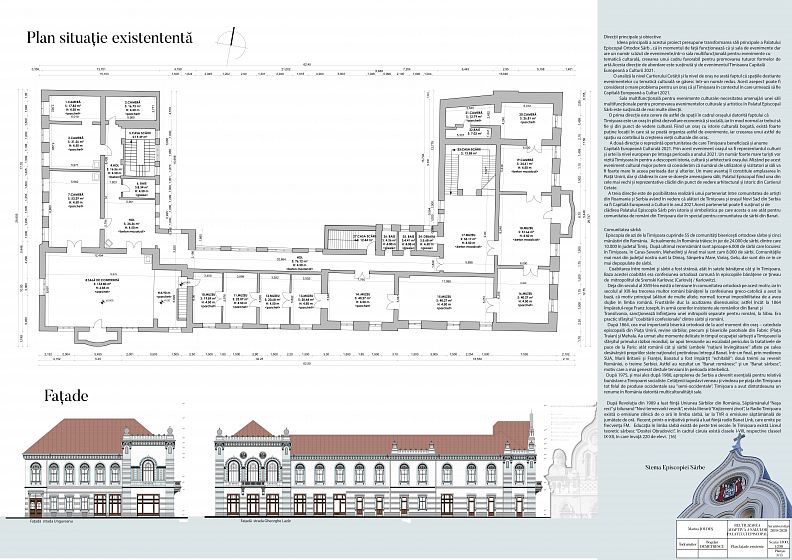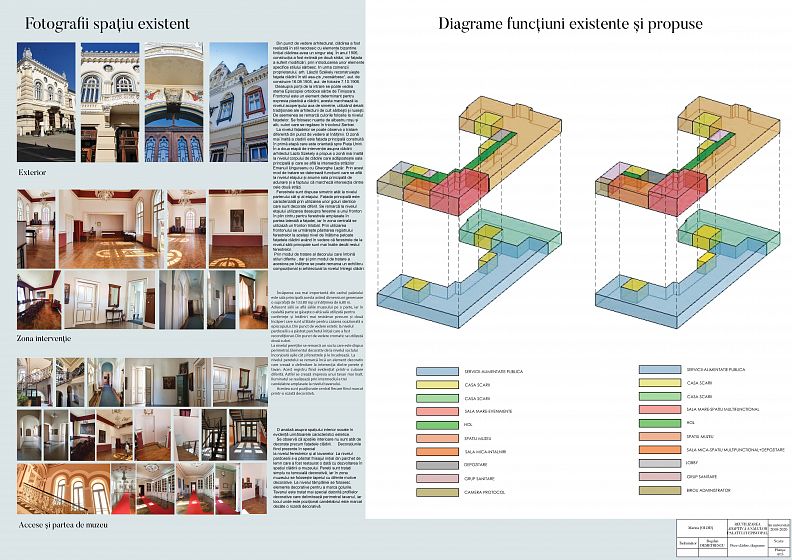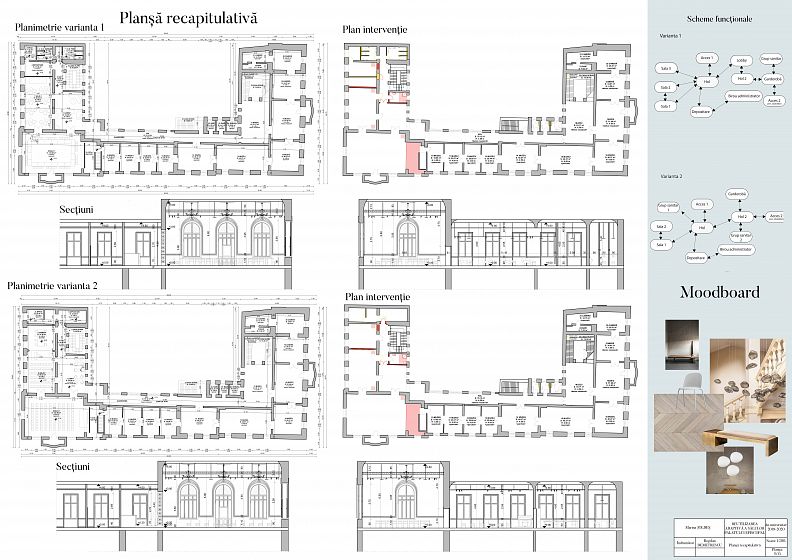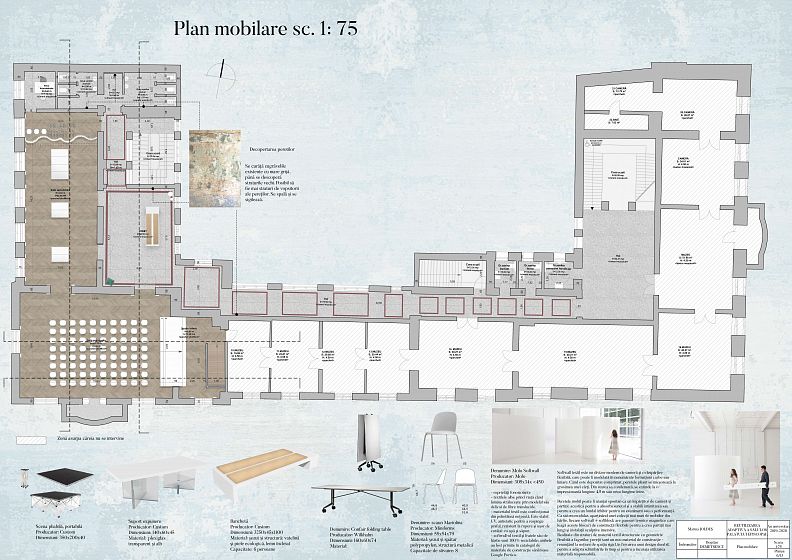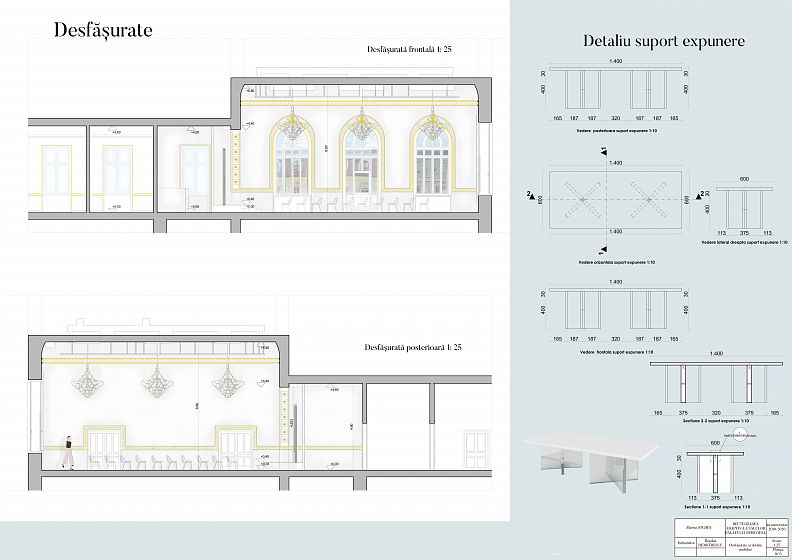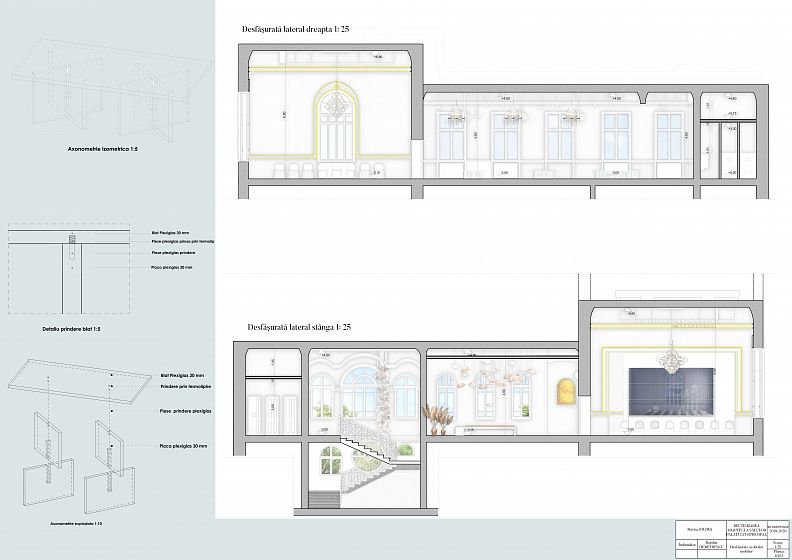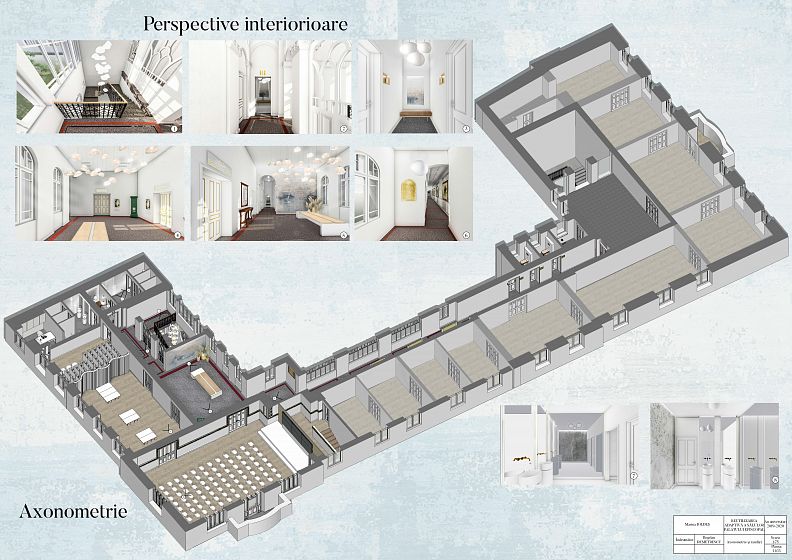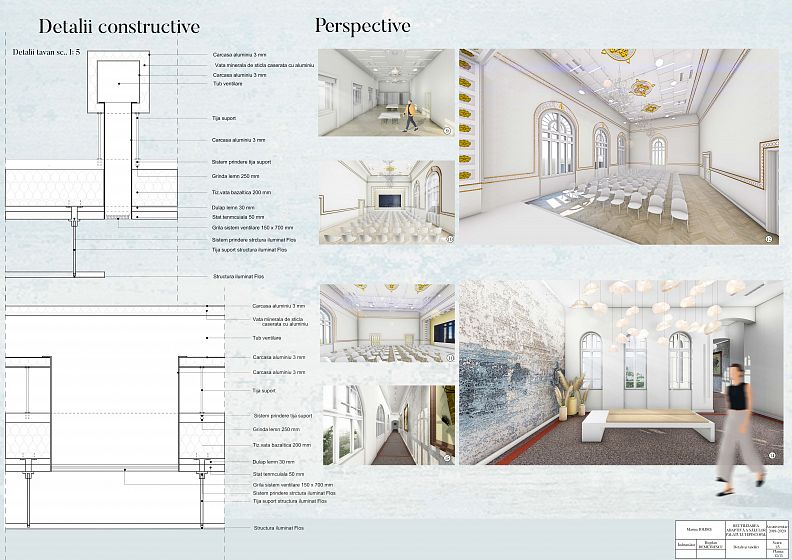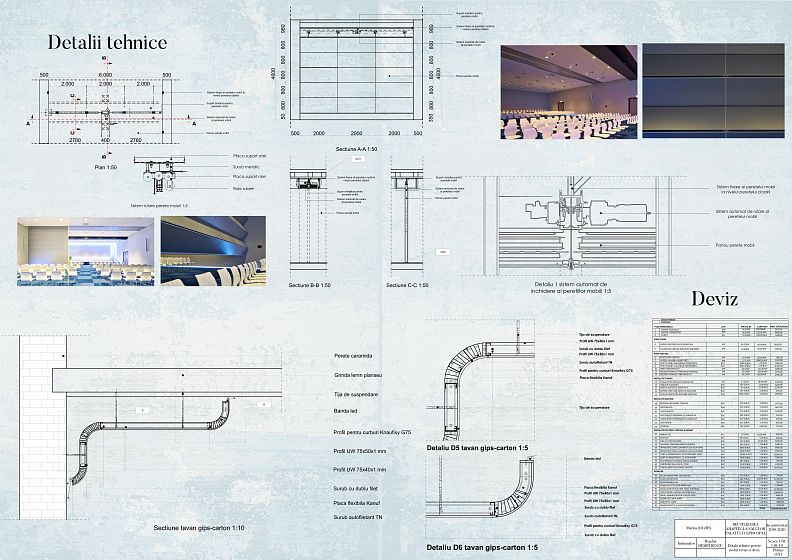The adaptive reuse of the Serbian Episcopal Palace Halls

Project idea
Nowadays it becomes a practice to explore and work with heritage buildings. Methods to renovate and revive them for sustainable use has become a very important debate in contemporary architecture. The aim is to identify and analyze the strategies through which the interior spaces of heritage buildings can adapt to contemporary functions. Reuse, in its various forms and meanings, becomes an important topic being explored from a multi-disciplinary perspective. In this perspective, every further adaptation keeps the heritage architecture updated to be suitable for the new timeframe: adaptive reuse is intended as an operation that uses different theories and tactics to keep the buildings operative. In the last years, interior design becomes an important practice in reusing the interior spaces of heritage buildings because these types of buildings have their own authenticity and this must be kept alive even if the space function changes. In these times, the needs of the people are in a continuous change therefore the interior spaces must adapt to these new conditions. As a result of a theoretical and practical analyze it can be noticed that there is a need for more adaptive and easy-to-use spaces now even more than in the past.
Project description
In order to interfere in the space, I studied the Serbian Episcopal Palace from Timisoara from different perspectives. Carrying out analysis from the perspective of the theoretical approaches and strategies. It is very important to define the theoretical approaches so that subsequently develop an intervention concept adapted to the characteristics of the building.
Historical context
Episcopal Palace in located in Unirii Square and it is one of the monumental buildings of the city. In the beginning of the 18th century on the actual site was an old wooden church called Sf. Gheorghe Church wich burnt in 1728. The new building was built between 1744-1747 to be the Episcopal residence and the headquarters of the Roscian school. They use the Austrian Baroque as an architectural style. It is used to host the steering committee of the Serbian Parish. After the hierarchical separation between Romanian Orthodox Church and the Serbian one, the palace reverted to the Serbian Orthodox diocese, and after the First World War, Orthodox Serbs in Romanian Banat were led by hierarchs- administrators appointed by the Serbian Orthodox Church, with the consent of the Romanian state. Between 1905 and 1906, the facade was remodeled by the architect László Székely, but the original plans of the palace are still preserved in the diocesan archives. New decorative elements, specific to Serbian architecture, were added to the facade in 1911. A new restoration took place in 1983, along with all the other buildings in the square. The last intervention was recently and involved in the restoration of the facades and the interiors of the building.
Typological approach
From the typological point of view, the building is part of historical heritage buildings, being one of the oldest buildings in Unirii Square. The main part of the building is oriented towards Unirii Square, which is an important space for social and economic activities.
Its location on the plot is strategical because the building becomes an important object in the urban context having an important exposure. The building has three accesses one from each street. Due to the limitations in terms of land area, the functions within the building are arranged according to their importance. On the ground floor are the bishop offices and public food spaces due to the accessibility and the large number of people who pass through the streets. The main hall is arranged for str. Gheorghe Lazar respectively Emanoil Ungureanu. The spaces inside are organized after their importance as well after their necessity of natural light. The passage hall, the stair house, the technical spaces, and the sanitary groups are disposed towards the yard. In these days the spaces within Episcopal Palace are into a continuous change of function because they are rented. In this way, the typology of the building changed in time and made the building have become a mixt–space typology building that is adapted to every need of the activities that function in its interior spaces. Social and economic aspects influenced the change of the building typology because only in this way the building can function optimally and can be able to keep its historical character over time. Following the typological analyze it can be seen that the building is part of the public-private heritage building typology even if initially it was a private building. Due to the rich history, typology, location, and the typology of the interior space it can be reused and changed into a multifunctional cultural space in order to increase people's access and keep the building active.
Technical approach
Currently, the interiors of the Serbian Episcopal Palace are in a very good state of preservation as a result of the interventions of rehabilitation on structure, facades, and interior space. Considering the strength and stability of the building and considering the consolidation interventions that have taken place over time it can be considered that the structure and stability of the building is in good parameters. Due to the fact that the resistance of the building is very good, new functions can be adapted in the interior space.
The free height of the ceiling is generous over 3.5 meters. The width of the corridors is over 1.5 m comply with the requirements. Because the Episcopal Palace is a building of great historical importance, fire protection is very important. The floors are made of a wooden structure but are protected by concrete so they will not allow the flames to be extended to the upper floor. The building has 3 staircase emergency exists that can be used for evacuation in case of fire. They are appropriately sized, at least 1.20 meters, and have two discharge flows according to P118-99. The building does not contain combustible materials such as polystyrene or mineral wool. Wood is a combustible material and it is very present in the building, at the level of the floor, the carpentry of the glass, and the floor. These elements require special treatment to be able to withstand fire safety. Finishes are well maintained, the space has high free heights so a large volume of air is ensured, at the same time the spaces have large windows so it ensures a good ventilation of the space. The interventions focus on the elements that are related to the comfort of the people inside, as well as the proper functioning of the activities in the interior space.
It can be seen that there is currently a parquet on the floor of the halls. This is an old one and adapting to the new function requires changing it. In order to keep the same spirit of the building, the current parquet was replaced with a similar one. Along with this intervention, sockets have been installed at the floor level, placed according to the new configurations. A ventilation and heating system has been provided at the level of the walls, through radiant panels placed under the windows. In this way, the radiators were removed and it improved the aesthetics of the interior.
It is important that the lighting mode can be changed. Existing luminaires will be retained, to which will be added a structure that includes different lighting modes. Interior space of the building can be reuse to adopt new functions with minimal intervention on building structure which means a low budget. In this case is more ecological and economical to reuse the interiors space with new function than to build a new building. On the other point of view, this operation will not affect the historical and architectural character of the building.
Programmatic approach
Initially, the building was represented the Serbian Church in Banat. From a functional point of view, the palace had an administrative role accommodating church offices, meeting rooms, as well as accommodation spaces. Over time the Serbian population declined in number and the initial function of the spaces changed in time and to adapt to the new social and economic reality. The new functions that the building adapts include on the ground floor public catering spaces that are rented, offices for the Episcopate of Serbia, on the floor there is a museum and a room that can be rented for various events or conferences. It can be observed that the role of the object from a functional point of view in the urban context has changed over time from the administrative role to the building role with mixed functions. It is easy to observe that analyzing the building from a programmatic approach the interior space is flexible and can accommodate very easy new functions. The proposed activities that will take place on the first floor of the building is a multifunctional cultural space.
This type of activity was implemented because in the space was used in a similar way and even in the present the owner has requested to use the space for cultural events.
Strategic approach
From the point of view of the representational role in the urban context, the building was constituted to be the administrative headquarters of the Serbian Church and at the same time to represent the Serbian community, an important community in Banat. The building has a symbolic and architectural value which makes it one of the most iconic buildings in the city. In this context the intervention shouldn’t change the existing appearance because it is a heritage building, these types of buildings are considered monuments. The monuments remind people of the history and past events in order to connect people with historical evolution. It is suitable to adopt a new function and in this way to attract more people to experience the real historical value of the building. The intervention aims to create a connection between the significant old elements with new elements to strengthen people's experience in the space. In order to emphasize these feelings of being surprised about the historical evidences it was created an accent wall in order to uncover the different successive layers of the plaster. Another concept that uses poetry is the idea to keep and refurbish existing elements because of their long time presence in the space.
Preservation strategies
The two important things that need to be ensured are to be occupied and to be active and are the ones that determine the new function
That will be added to space and also the function will have its role in the way that interventions will be made. The interventions focus on the elements that concern the comfort of the people inside, as well as the good function of the activities in the interior space. The strategy that has been developed by studying the building history and context aspire to enhance the historic value of the interior by preserving all the elements with a historical value like the woodwork, elements of decorations, some chandeliers and a few pieces of furniture that have a long history and that were already in the space. The intervention in existing space uses the newest concepts in interior design for creating connections between space, people and the objects that are inside. In this way by adding new interventions, but keeping the important historical elements it creates a suitable space for cultural activities and events.
Timescales and updates
The building expresses its long history even on facade. The presence of Serbian and neoclassic elements defines the times that it has been through. Simply by looking at the building it is easy to get a glimpse of the old times and its identity. In order to create an eternal and real present it is necessary to be able to remember the past. That is why the interior even the exterior leaves a trace of the old layers.
To live is to leave traces
Because the building has a significant symbolic value for Serbians and also for Romanians, it needs to be preserved in a way that the interior doesn’t lose the aesthetics inherited throughout its life period.
Grade(s) of reusability
Contemporary time is characterized by hunger for continuous change and evolution. That is why the interior space is able to accommodate multiple functions. Following the idea of reusability, the intervention is able to be reversible.
5. CONCLUSIONS
In conclusion, it is very important to develop strategies for heritage buildings that create good conditions for them to be active and to play an important role in urban space. In this endeavor, adaptive reuse theories and processes are useful to create processes that use and reuse existing resources of the historical buildings in order to preserve them. In this way the heritage buildings become active and their history is continued in time. This space can create powerful emotions to the users. To reuse an old interior space is important to analyze the connections with future users. A reuse space needs to pursue and achieve improvements in how people relate to space, visually, symbolically, and in connection with the past and history of it. If connections are stronger thus space returns to life and becomes more active. This characteristic is very important because a space without his history becomes a tedious space that lost its symbolic values. It creates relations with the past and it signification when adaptive reuse theories are used in practice and create cross-bridges with the history of the space. In current practice, architecture and interior design are influenced by social, economic, and political factors. In order to succeed it is very important to develop new theories and frameworks which set the rules for the intervention process. The project described is responsible for constructing new functions, developed new spaces and continues the history. Due to the neutral choices in the arrangement of the interior spaces, the episcopal palace appeared the phenomenon of musealization. These interventions cannot lead the active maintenance and occupy a space. Through the proposed intervention of transforming the interior into multifunctional cultural spaces, a contextual context was created for the development of activities and the permanent occupation of spaces. The history of this palace evolves and interpolates with the history of the city. Taking in consideration all these historical aspects the palace become a symbol for the city. Any intervention to reuse his interior space must be done by taking into consideration the approaches detailed in this article to have a successful intervention. Adopting these strategies, the history and the symbolism of the space is preserved and also it is creating a recent use for space. In this way, the palace building can become active again in the cultural life of the city.
Technical information
Tehnical Details
Co-authors
Bogdan Demetrescu

